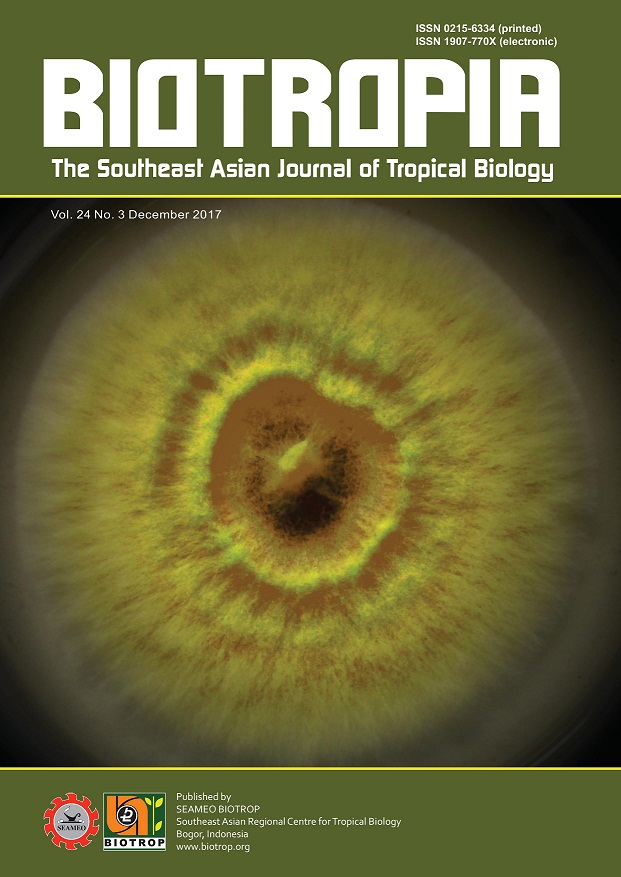
Tags
BIOCHEMICAL CHARACTERISTICS OF THIONIC FLUVISOL LINKED TO LAND USE TYPES IN SOUTHERN VIETNAM
Content Language : English

Thionic Fluvisols soil in Southern Vietnam is like typical acid sulfate soil in the tropics and is severely polluted due to human activities. Salinity intrusion and industrial wastewater contamination are the main cause of environmental degradation in soil ecosystem. This research was aimed to determine a link between biochemical soil properties and land use types to provide suitable solutions for afforestation and soil restoration. Soil sampling was conducted in five different land use types at four soil layers (O, AB, Bj and Cp). The five land use types were sugarcane crop; Melaleuca plantation; 2-year Acacia plantation; 5-year Acacia plantation; and control (grass-covered land). The results showed that soil in those five land use types were very acidic (pH ≤ 4) having poor-nutrient condition with range of orthophosphate content of 378 - 640 mg/kg, N-NH4 of 586 - 999 mg/kg and N-NO3 of 830 - 1,112 mg/kg. Concentration of toxic ions was very high with large variation among land use types and soil depths i.e. 1,799 – 12,403 mg SO42-/kg; 22 - 1,645 mg exchangeable Fe/kg and 34 - 88 mg Al3+/kg soil. The lowest concentration of exchangeable Fe3+ and SO42- ions were found in sugarcane and Melaleuca plantations, respectively. Twenty-three sulfur-oxidizing bacteria and two iron-oxidizing bacteria were identified. All these bacteria were initially identified as Thiobacillus sp. Sugarcane and Melaleuca plantations exhibited the most diverse Thiobacillus species which linked to reduction of exchangeable Fe and SO42- concentrations in these two land use types. This study indicated that Thiobacillus sp. could grow well in the Thionic Fluvisols. It is proposed that Melaleuca and sugarcane species could reduce iron and sulfur contents in Thionic Fluvisols in the tropics.
Link

This work is licensed under a Creative Commons Attribution-NonCommercial-NoDerivatives 4.0 International License.
